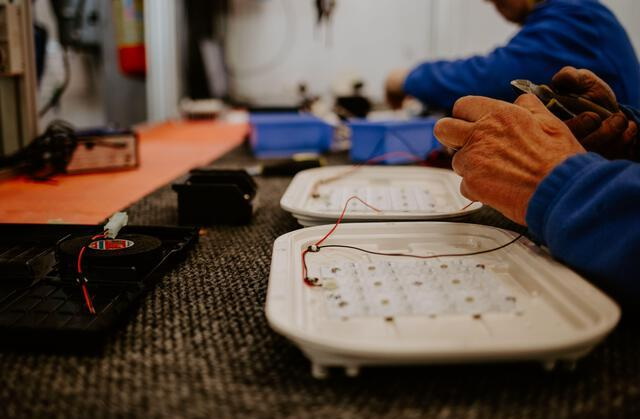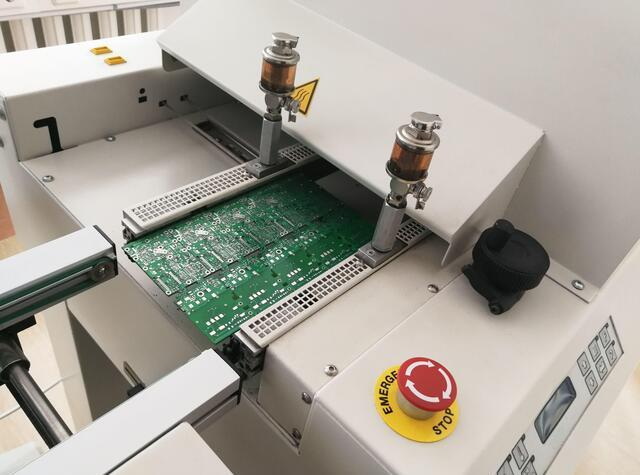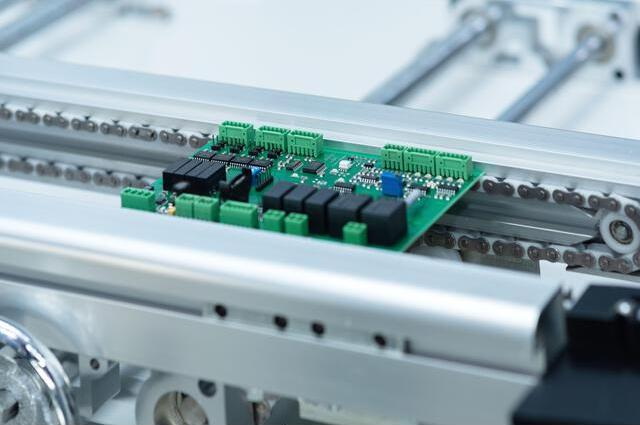Content Menu
● Introduction to SMT Stencils
>> Common SMT Stencil Materials
● Innovations in SMT Stencil Technology
>> Nano-Coatings and Surface Treatments
>> Additive Manufacturing and Customization
>> Integrated Inspection and Quality Assurance
>> Smart Stencils
>> Dual-Layer Stencil Technology
>> Laser Machining Advancements
>> Biodegradable and Lower-Toxicity Solder Pastes
>> StenTech's BluPrint PVD Stencils
● Future Trends in SMT Stencil Technology
>> Impact of Emerging Technologies on Industry
>> Challenges and Opportunities
>> Industry Applications
>> Economic Impact
● Conclusion
● FAQs
>> 1. What are the primary materials used for SMT stencils?
>> 2. How do nano-coatings improve SMT stencil performance?
>> 3. What role does additive manufacturing play in SMT stencil customization?
>> 4. How do smart stencils enhance PCB assembly processes?
>> 5. What is the significance of dual-layer stencil technology in PCB assembly?
The evolution of Surface Mount Technology (SMT) stencils has been pivotal in enhancing the precision and efficiency of PCB assembly processes. Recent innovations in SMT stencil technology are transforming the way solder paste is applied, ensuring higher quality, reduced defects, and improved productivity. This article delves into the emerging trends and technologies in SMT stencil manufacturing, focusing on advancements in materials, design, and functionality.

Introduction to SMT Stencils
SMT stencils are thin metal sheets with precise openings that correspond to the pads on a PCB. They are crucial for depositing solder paste accurately during the PCB assembly process. The choice of SMT stencil material significantly impacts the performance and durability of the stencil. Common materials include stainless steel, nickel, and occasionally, Mylar or Polyimide for specific applications.
Common SMT Stencil Materials
- Stainless Steel: Known for its durability, dimensional stability, and cost-effectiveness, stainless steel is the most widely used material for SMT stencils. It offers excellent compatibility with most solder pastes and cleaning agents.
- Nickel: Nickel stencils, particularly electroformed nickel, are gaining popularity due to their smooth aperture walls, which enhance solder paste release. They are ideal for ultra-fine pitch applications and offer a longer lifespan compared to stainless steel.
Innovations in SMT Stencil Technology
Nano-Coatings and Surface Treatments
Nano-coatings applied to stencil surfaces have become a significant innovation. These coatings improve solder paste release characteristics, reducing adhesion and the need for frequent cleaning. This technology enhances print quality, especially for fine-pitch components, and prolongs stencil life. Recent advancements include the introduction of StenTech's BluPrint CVD Surface Treatment, which offers a consistent and durable coating that enhances stencil performance and longevity.
Additive Manufacturing and Customization
The integration of 3D printing technology allows for the creation of custom-designed SMT stencils with intricate geometries and tailored aperture designs. This flexibility accommodates unique PCB layouts and component configurations, enabling the production of highly specialized stencils for complex PCB designs. Additive manufacturing supports rapid prototyping and reduces lead times, making it an attractive option for manufacturers seeking to innovate quickly.
Integrated Inspection and Quality Assurance
Emerging technologies integrate automated inspection systems into the stencil printing process. These systems enable real-time monitoring of solder paste deposition quality, detecting defects such as insufficient solder paste volume or misalignment. This ensures adherence to manufacturing specifications and maintains high standards of quality and reliability in PCB assembly.
Smart Stencils
Smart stencils equipped with sensors can detect pressure and temperature during the printing process, providing real-time feedback to the machine. This innovation improves the accuracy and consistency of solder paste deposition. Additionally, smart stencils have a longer lifespan than traditional stencils, reducing the need for frequent replacements.
Dual-Layer Stencil Technology
Dual-layer stencil technology allows for the simultaneous printing of solder paste and adhesive for multi-material component deposition. This innovation supports the assembly of complex PCBs with diverse component types, enhancing manufacturing flexibility and efficiency.
Laser Machining Advancements
Advancements in laser machining enable the creation of progressively smaller stencil apertures, supporting ultra-fine-pitch component designs. This technology is crucial for achieving precise solder paste deposition in high-density PCBs. The precision and speed of modern laser systems allow for rapid production of stencils with complex geometries.
Biodegradable and Lower-Toxicity Solder Pastes
The shift towards biodegradable and lower-toxicity solder pastes is transforming the environmental impact of soldering processes. This trend aligns with the broader industry move towards more sustainable manufacturing practices. The use of eco-friendly solder pastes not only reduces waste but also enhances workplace safety by minimizing exposure to harmful chemicals.
StenTech's BluPrint PVD Stencils
StenTech has also introduced BluPrint PVD Stencils, which utilize advanced Physical Vapor Deposition (PVD) technology to enhance solder paste deposition precision and durability. These stencils offer a transfer efficiency of 98%, making them ideal for high-performance PCBs with complex designs. They can perform up to 50,000 prints without significant deterioration, reducing the need for frequent cleaning cycles and improving overall productivity.

Future Trends in SMT Stencil Technology
As technology continues to evolve, SMT stencils will play a pivotal role in driving innovation and excellence in PCB assembly. Future trends include:
- Advanced Materials: The development of new materials with enhanced properties, such as improved durability and solder paste release, will continue to enhance stencil performance.
- Automation and AI: The integration of AI and machine learning in stencil design and manufacturing will optimize aperture dimensions and geometries, further improving print quality and efficiency.
- Sustainability: The focus on sustainable materials and processes will become more pronounced, reducing the environmental footprint of PCB assembly.
Impact of Emerging Technologies on Industry
Emerging technologies in SMT stencil manufacturing are not only enhancing production efficiency but also contributing to the development of more complex and sophisticated electronic devices. The ability to produce stencils with precise apertures and advanced coatings supports the assembly of high-density PCBs, which are critical for modern electronics such as smartphones, laptops, and automotive systems.
Challenges and Opportunities
Despite the advancements, challenges remain in the adoption of new technologies. High initial investment costs and the need for specialized expertise can hinder the widespread adoption of advanced stencil technologies. However, these challenges also present opportunities for innovation and growth. As manufacturers invest in new technologies, they can differentiate themselves through improved quality and efficiency, gaining a competitive edge in the market.
Industry Applications
SMT stencils play a crucial role in various industries, including automotive, aerospace, and consumer electronics. In the automotive sector, high-reliability PCBs are essential for safety-critical systems such as airbag controllers and anti-lock braking systems. Advanced SMT stencil technologies ensure the precise assembly of these components, contributing to vehicle safety and performance.
In aerospace, where components must withstand extreme conditions, SMT stencils are used to assemble PCBs with high precision and reliability. The use of advanced materials and coatings in stencils supports the production of durable PCBs that meet stringent aerospace standards.
Economic Impact
The adoption of advanced SMT stencil technologies can have a significant economic impact on manufacturers. While initial investment costs may be high, these technologies offer long-term benefits such as reduced maintenance, improved productivity, and enhanced product quality. By minimizing defects and reducing the need for rework, manufacturers can save on production costs and improve their bottom line.
Moreover, the integration of AI and automation in stencil design and manufacturing can lead to increased efficiency and reduced labor costs. This allows companies to allocate resources more effectively, focusing on innovation and growth rather than manual processes.
Conclusion
Innovations in SMT stencil technology are revolutionizing the PCB assembly process by enhancing precision, efficiency, and sustainability. Advances in materials, design, and functionality are crucial for meeting the demands of modern electronics manufacturing. As the industry continues to evolve, the role of SMT stencils in supporting cutting-edge technology and sustainable practices will remain paramount.

FAQs
1. What are the primary materials used for SMT stencils?
- The primary materials used for SMT stencils include stainless steel and nickel. Stainless steel is the most common due to its durability and cost-effectiveness, while nickel offers better corrosion resistance and is ideal for ultra-fine pitch applications.
2. How do nano-coatings improve SMT stencil performance?
- Nano-coatings enhance solder paste release characteristics, reducing adhesion and the need for frequent cleaning. This improves print quality, especially for fine-pitch components, and prolongs stencil life.
3. What role does additive manufacturing play in SMT stencil customization?
- Additive manufacturing allows for the creation of custom-designed SMT stencils with intricate geometries and tailored aperture designs. This flexibility supports unique PCB layouts and component configurations, enabling the production of highly specialized stencils.
4. How do smart stencils enhance PCB assembly processes?
- Smart stencils equipped with sensors provide real-time feedback on pressure and temperature during printing, improving the accuracy and consistency of solder paste deposition. They also have a longer lifespan than traditional stencils.
5. What is the significance of dual-layer stencil technology in PCB assembly?
- Dual-layer stencil technology enables the simultaneous printing of solder paste and adhesive for multi-material component deposition. This supports the assembly of complex PCBs with diverse component types, enhancing manufacturing flexibility and efficiency.




















